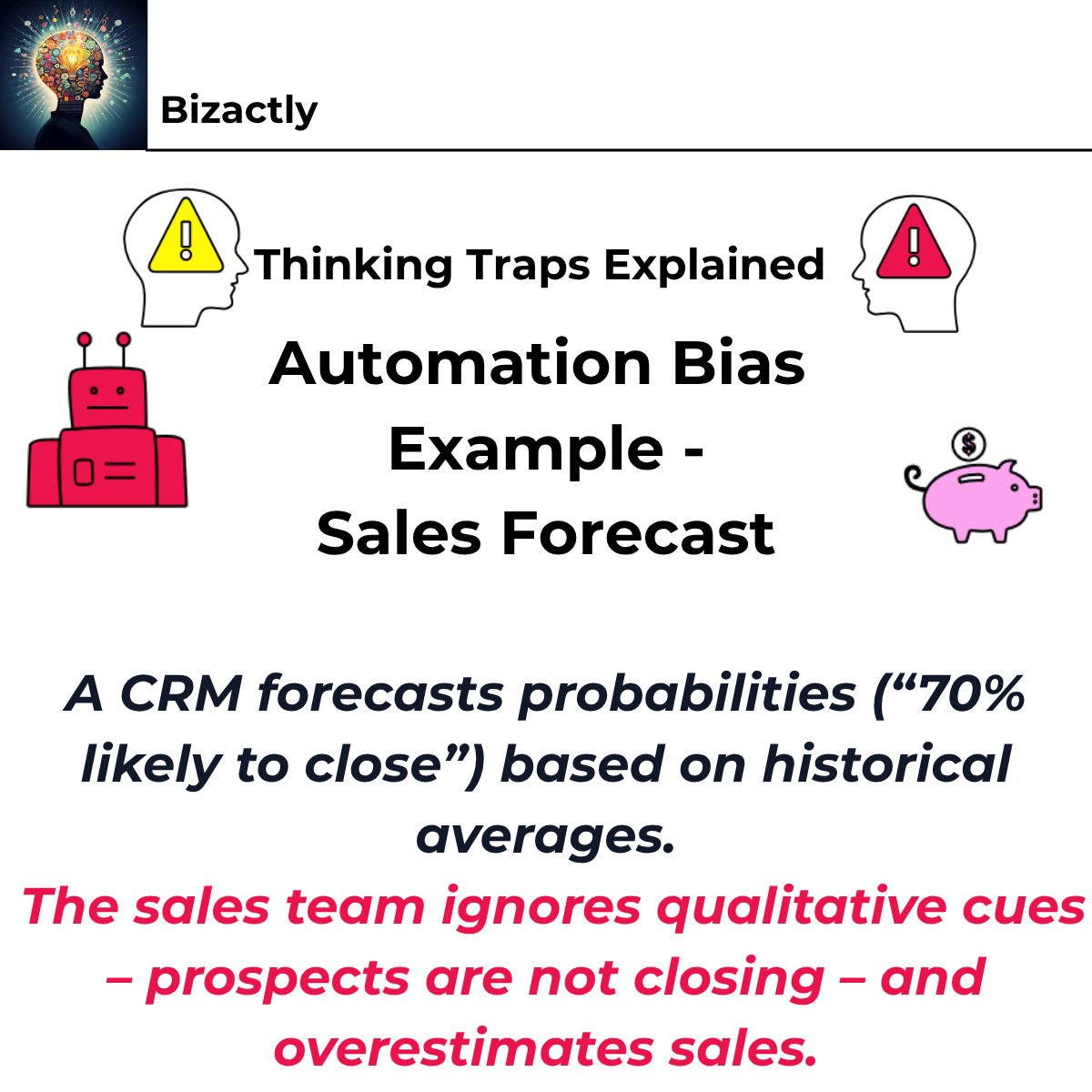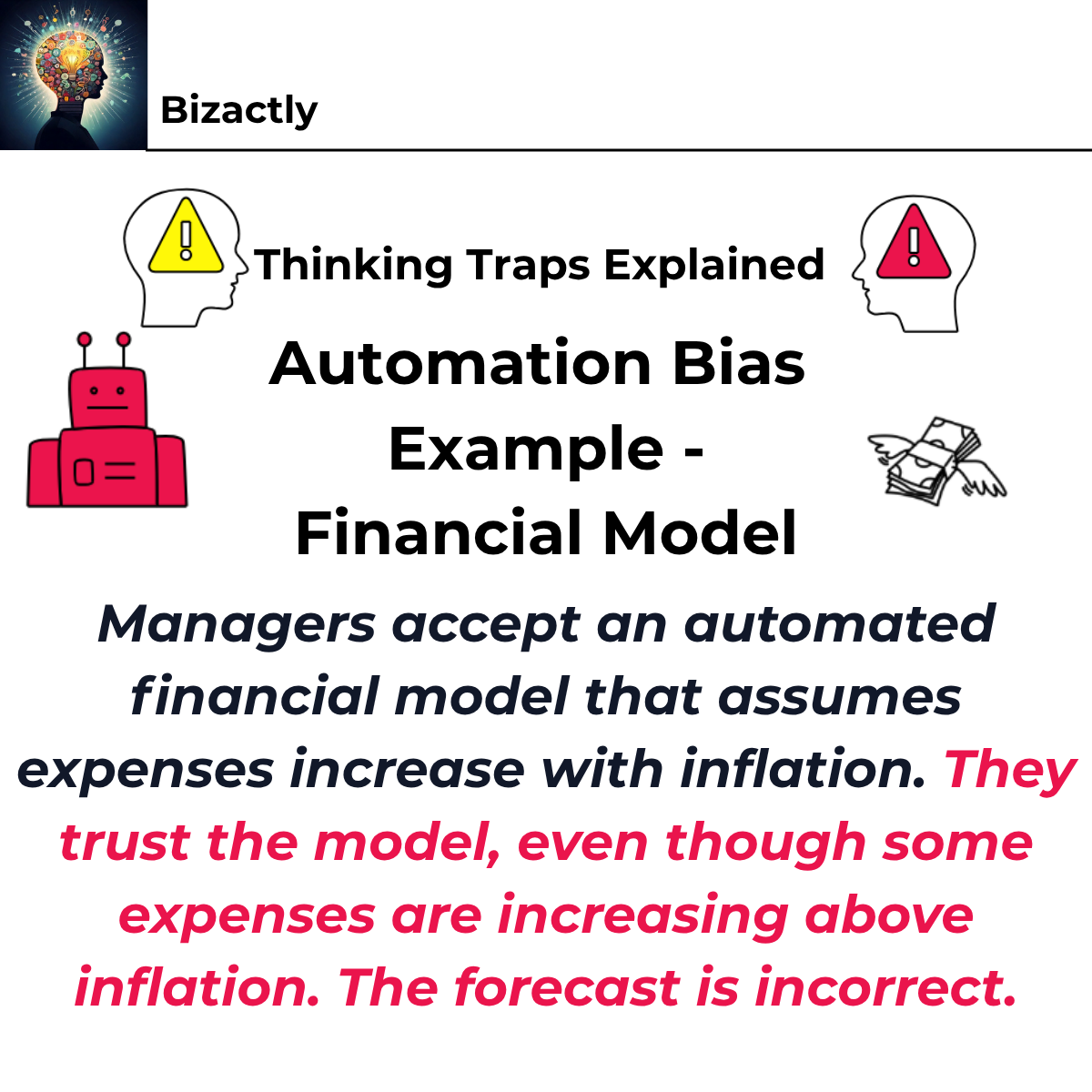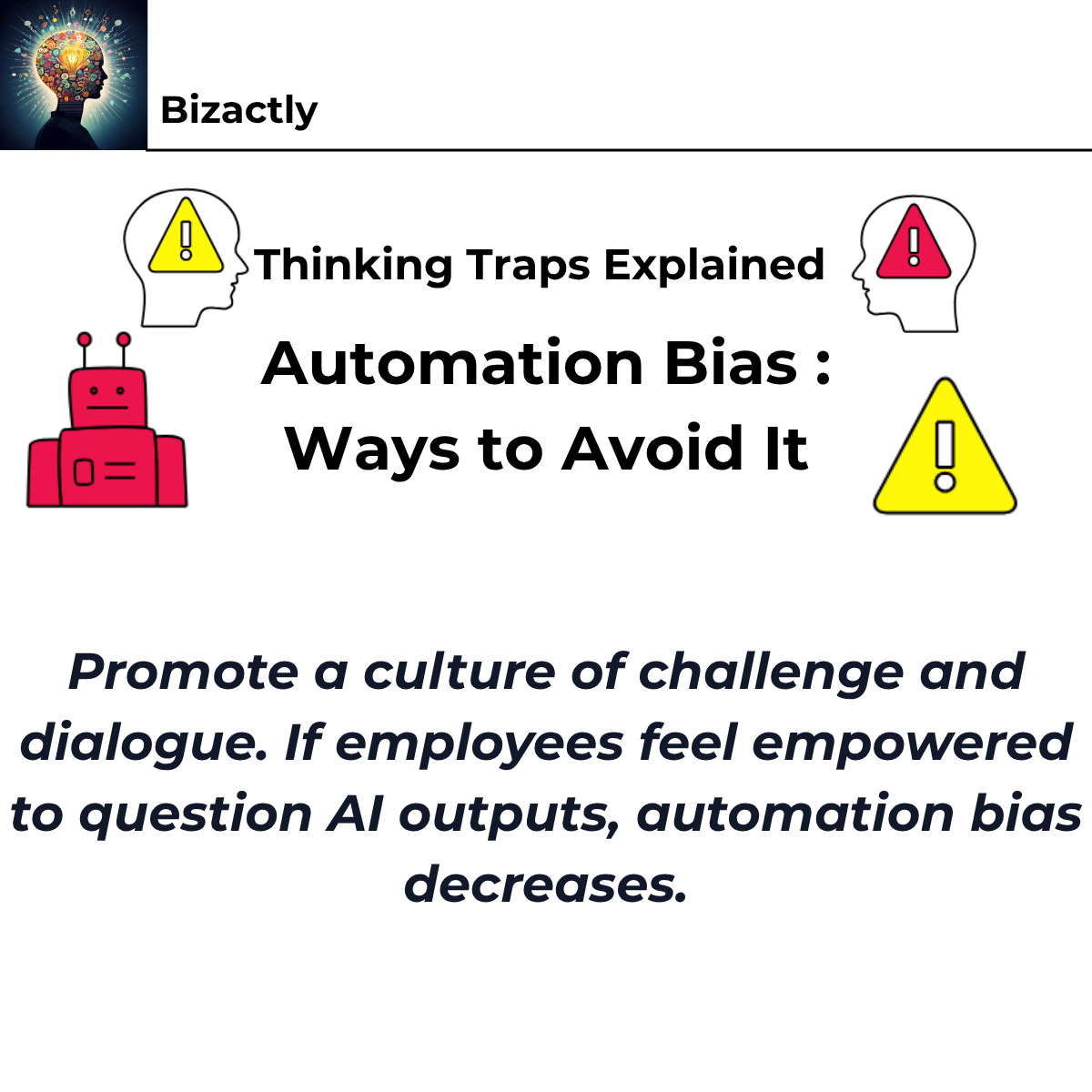
Being humans, we often fool ourselves, both in business and in our personal lives. If we are aware of thinking traps, we are less likely to fall into them.
One thinking trap is the "Automation Bias".
🤖 Automation bias is the tendency for people to over-rely on automated systems, software, or algorithms—trusting them too much and failing to question their recommendations.
🧠 Why automation bias happens:
😴 Laziness or cognitive overload — we want quick answers and shortcuts.
💼 Overconfidence in technology — “the system must be right.”
⏳ Time pressure — no time to double-check results.
🏢 Business habit — the company always uses an ERP/AI forecast and nobody questions the assumptions.
📈 Trend effect — everyone else is using the newest AI tool.

📊 Sales Forecasting (CRM)
A CRM says a deal is “70% likely to close.” 😃
The sales team trusts the prediction and ignores real-world cues that the customer isn’t ready — leading to inflated forecasts.
🏭 Inventory Replenishment (ERP)
The ERP shows stock is sufficient for the next month. 📦
Staff don’t question assumptions → stockouts happen when demand spikes.
💰 Financial Forecasting
Managers accept a model that assumes costs rise with inflation.
They overlook categories rising much faster → inaccurate budgets. 📉



✅ Ways to avoid automation bias:
🧑💼🤖 Combine human and AI decision-making — keep a “human-in-the-loop” to review and override results.
💬 Promote a culture where employees challenge system outputs — questions reduce blind trust.
🔍 Use ERP/AI tools with explainability — show assumptions, data sources, and logic so users can verify results.


